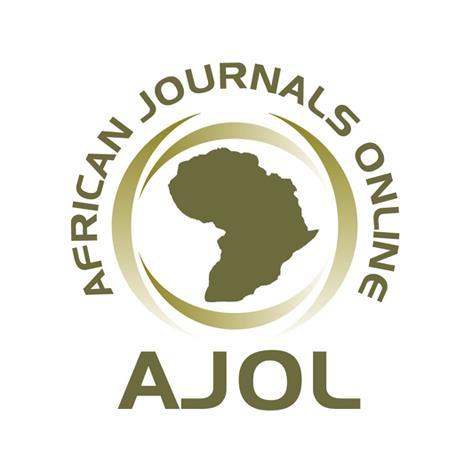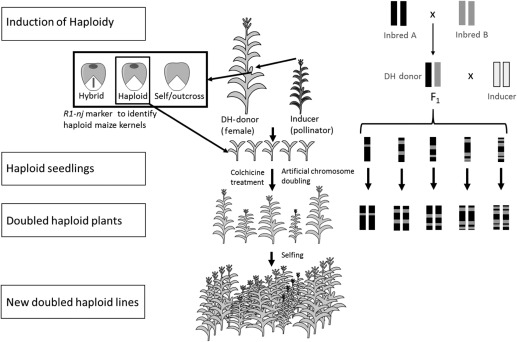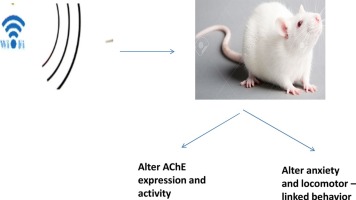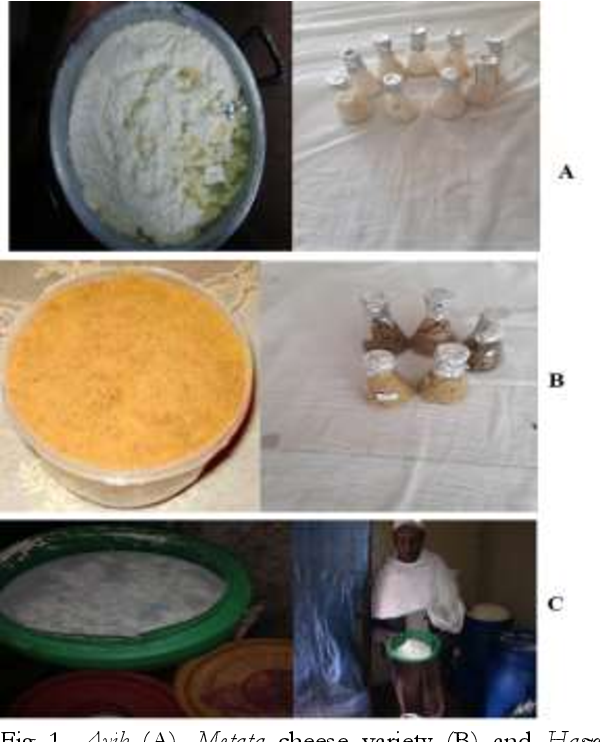Reliability of NASA NEX-GDDP Dataset in Reproducing Climatological Mean Temperature and Precipitation over the Gibe III Watershed, Omo-Gibe Basin, Ethiopia
Downloads
Background: The challenge of climate variability is a major problem for developing and using
water resources. Scarcity of climate data compounds the problem and undermines the efforts to
acquire updated information for predicting climate change and reduce its risks.
Objective: The objective of the study was to evaluate and select the best climate models having
NASA Earth Exchange Global Daily Downscaled Projections (NEX-GDDP) dataset for Gibe
III watershed. Material and Methods: NEX-GDDP data of precipitation and temperature with
spatial resolution of 0.25º x 0.25º of ten CMIP5 models was, evaluated against observed data of
eight stations distributed in the Watershed.
Results: The models showed a consistent and reasonable pattern for mean monthly total
precipitation and mean temperature (max and min). The mean monthly precipitation of all models
against observation also resulted to R2 of 0.71 to 0.99 and the Nash–Sutcliffe efficiency (NSE)
value of 0.66 to 0.99. Mean annual precipitation of model ensemble mean over the watershed
against observation spatially varied between –100 and 100 mm underestimating at the northern
and southern tips of watershed while overestimating at central and northeastern parts. The mean
maximum and minimum temperature varied from –1.6 ºC to +2.9 ºC and 0.4 ºC to 3.8 ºC,
respectively.
Conclusion: The result indicates that, selecting climate models’ ensemble mean could provide
higher confidence in climate change projection than choosing a specific model for an entire
watershed. Based on evaluation metrics and long-term mean annual rainfall, NEX-GDDP dataset
of CSIRO-MK3-6-0, MIROC5, MPI-ESM-MR, NorESM1-M, MIROC5 and GFDL-ESM2M
models reasonably simulated the mean annual rainfall at Shebe, Sodo, Jimma, Hosaina, Sokoru
and Woliso stations respectively for uses of climate change projection in the Watershed. The
reliability of NEX-GDDP dataset for the climate models need seasonal basis study in the future
at the Watershed since this study did not conduct seasonal data analysis.
Keywords: Bias corrected; Climatological mean; Model ensemble mean; Statistically downscaled
Achilleos, G.A. 2011. The Inverse Distance Weighted
interpolation method and error propagation
mechanism creating a DEM from an analogue
topographical map. Journal of Spatial Science, 56(2):
–304.
Ahmed, K.F., Wang, G., Silander, J., Wilson, A.M., Allen,
J.M., Horton, R. and Anyah, R. 2013. Statistical
downscaling and bias correction of climate model
outputs for climate change impact assessment in
the US Northeast. Global and Planetary Change, 100:
–332.
Ahrens, B. 2006. Distance in spatial interpolation of daily
rain gauge data. Hydrology and Earth System Sciences,
(2): 197–208.
Alo, C.A. and Wang, G. 2010. Role of dynamic vegetation
in regional climate predictions over Western
Africa. Climate Dynamics, 35(5): 907–922.
Bao, Y. and Wen, X. 2017. Projection of China’s nearand long-term climate in a new high-resolution
daily downscaled dataset NEX-GDDP. Journal of
Meteorological Research,
https://doi.org/10.1007/s13351-017-6106-6.
Boé, J., Terray, L., Habets, F. and Martin, E. 2006. A
simple statistical-dynamical downscaling scheme
based on weather types and conditional
resampling. Journal of Geophysical Research, 111:
D23106. http://dx.doi.org/10.1029/2005JD006889.
Bosshard, T., Carambia, M., Goergen, K., Kotlarski, S.,
Krahe, P., Zappa, M. and Schar, C. 2013.
Quantifying uncertainty sources in an ensemble of
hydrological climate-impact projections. Water
Resources Research, 49: 1523–1536.
Chen, F.W. and Liu, C.W. 2012. Estimation of the spatial rainfall distribution using inverse distance weighting (IDW) in the middle of Taiwan. Paddy and Water Environment, 10: 209–222. DOI: https://doi.org/10.1007/s10333-012-0319-1.
Chen, H.P., Sun, J.Q. and Li, H.X. 2017. Future changes
in precipitation extremes over China using the
NEX-GDDP high-resolution daily downscaled
dataset. Atmos. Ocean. Sci. Lett., 10, 403–410.
Christensen, J.H., Carter, T.R., Rummukainen, M. and
Amanatidis, G. 2006. Evaluating the performance
and utility of regional climate models: The
PRUDENCE project. Climate Change, 81(1): 1–6.
Chu, J., Xia, J., Xu, C.Y. and Singh, V. 2010. Statistical
downscaling of daily mean temperature,pan
evaporation and precipitation for climate change
scenarios in Haihe River, China. Theoretical and
Applied Climatology, 99(1-2): 149–161.
De Silva, R., Dayawansa, N. and Ratnasiri, M. 2007. A
comparison of methods used in estimating missing
rainfall data. Journal of Agricultural Science, 3: 101–
Dettinger, M.D., Cayan, D.R., Meyer, M.K. and Jeton,
A.E. 2004. Simulated hydrologic responses to
climate variations and change in the Merced,
Carson, and American River basins, Sierra Nevada,
California, 1900–2099. Climate Change, 62: 283–
Dibike, Y.B. and Coulibaly, P. 2005. Hydrologic impact
of climate change in the Saguenay watershed:
comparison of downscaling methods and
hydrologic models. Journal of Hydrology, 307(1-
: 145–163. Doi:10.1016/j.jhydrol.2004.10.012.
Dyer, E., Washington, R. and Taye, M.T. 2019. Evaluating the CMIP5ensemble in Ethiopia: Creating a reduced ensemble for rainfall and temperature in Northwest Ethiopia and the Awash basin. International Journal of Climatology, 40: 2964–2985. Doi:10.1002/joc.6377.
EEPCO (Ethiopian Electric Power Corporation). 2009. Environmental and social management plan for Gibe III hydroelectric project: prepared by Salini contractor and MDI international consulting engineers. Pp. 238.
Frei, C., Schoell, R. and Fukutome, S. 2006. Future change of precipitation extremes in Europe: Intercomparison of scenarios to regional climate models. Journal of Geophysical Research, 111: D06105. Doi:10.1029/2005JD005965.
Hayhoe, K., Wake, C.P., Huntington, T.G., Luo, L.,
Schwartz, M.D., et al. 2006. Past and future
changes in climate and hydrological indicators in
the US Northeast. Climate Dynamics, 28(4): 381–
Hewitson, B.C. and Crane, R.G. 2006. Consensus
between GCM climate change projections with
empirical downscaling: precipitation downscaling
over South Africa. International Journal of Climatology,
(10):1315–1337.
Ho, C.K., Stephenson, D.B., Collins, M., Ferro, C.T. and
Brown, S.J. 2012. Calibration strategies; a source
of additional uncertainty in climate change
projections. Bulletin of the American Meteorological
Society, 93(1): 21–26.
IPCC (International Protocol for Climate Change). 2013.
Resource Guide for Advanced Learning on
Predicting and Projecting CLIMATE CHANGE.
The one UN Climate Change Learning
Partnership (UN CC: Learn).
Jacob, D., Petersen, J., Eggert, B., Alias, A., Christensen,
O. B., et al. 2013. EURO-CORDEX: New highresolution climate change projections for
European impact research. Regional Environmental
Change, 14(2): 563–578. Doi:10.1007/s10113-013-
-2.
Jain, S., Salunke, P. and Mishra, S.K. 2019. Advantage of
NEX-GDDP over CMIP5 and CORDEX Data:
Indian Summer Monsoon. Atmospheric Research,
: 152–160.
Jones, R.G., Noguer, M., Hassell, D.C., Hudson, D.,
Wilson, S., Jenkins, G. and Mitchell, J.F. 2004.
Generating High Resolution Climate Change
Scenarios Using PRECIS. Pp40.
Kug, J.S., Kang, I.S. and Choi, D.H. 2008. Seasonal
climate predictability with tier-one and tier-two
prediction systems. Climate Dynamics, 31(4): 403–
Longley, P.A., Goodchild, M.F., Maguire, D.J. and Rhind,
D.W. 2001. Geographic Information Systems and Science.
Johns Wiley &Sons Ltd, New York.
MacLean, A. 2005. Statistical evaluation of WATFLOOD
(Ms). University of Waterloo, Ontario, Canada.
Maraun, D. and Widmann, M. 2018. Statistical downscaling
and bias correction for climate research. Cambridge
University Press.
https://doi.org/10.1017/9781107588783
McMahon, T.A., Peel, M.C. and Karoly, D.J. 2015. Assessment of precipitation and temperature data from CMIP3 global climate models for hydrologic simulation. Hydrology and Earth System Science, 19(1): 361–377.
Moeletsi, M.E., Sabalala, Z.P., De Nysschen, G. and
Walker, S. 2016. Evaluation of an inverse distance
weighting method for patching daily and dekadal
rainfall over the Free State Province, South Africa.
Water SA, 42(3): 466. Doi:10.4314/wsa.v42i3.12.
Nash, J.E. and Sutcliffe, J.V. 1970. River flow forecasting
through conceptual models: Part 1A discussion of
principles. Journal of Hydrology, 10: 282–290.
Negash Teklu, Ayalew Talema and Endashaw Mogessie,
editors. 2016. Proceeding of the Second National
Consultative Workshop on Integrated Watershed
Management on Omo-Gibe Basin. Jointly
Organized by Jimma University and PHE Ethiopia
Consortium, Addis Ababa, Ethiopia.
Payne, J.T., Wood, A.W., Hamlet, A.F., Palmer, R.N., et
al. 2004. Mitigating the effects of climate change
on the water resources of the Columbia River
Basin. Climatic Change 62(1–3): 233–256.
http://dx.doi.org/10.1023/B:CLIM.0000013694.
d6.
Pervez, M.S. and Henebry, G.M. 2015. Assessing the
impacts of climate and land use and land cover
change on the freshwater availability in the
Brahmaputra River basin. Journal of Hydrology:
Regional Studies, 3: 285–311.
Raghavan, S.V., Hur J. and Liong, S.Y. 2018. Evaluations
of NASA NEX-GDDP data over Southeast Asia:
present and future climates. Climatic Change, 148:
–518. https://doi.org/10.1007/s10584-018-
-3.
Ramirez-Villegas, J., Challinor, A.J., Thornton, P.K. and
Jarvis, A. 2013. Implications of regional
improvement in global climate models for
agricultural impact research. Environmetal Research
Letters, 8: 024018. Doi:10.1088/1748-
/8/2/024018.
Randall, D.A., Wood, R.A., Bony, S., Colman, R.,
Fichefet, T., et al. 2007. Climate Models and their
evaluation. In: Solomon, S., Qin, D., Manning, M.,
Chen, Z., Marquis, M., Averyt, K.B., Tignor, M.
and Miller, H.L. (eds.). Climate Change 2007: The
Physical Science Basis. Contribution of Working
Group I to the Fourth Assessment Report of the
Intergovernmental Panel on Climate Change,
Cambridge University Press, Cambridge, United
Kingdom and New York, NY, USA.
Sengupta, A. and Rajeevan, M. 2013. Uncertainty
quantification and reliability analysis of CMIP5
projections for the Indian Summer Monsoon.
Current Science, 105, 1692–1703.
Shimelis Gebriye. 2010. Modeling hydrological and
hydrodynamic processes in lake Tana basin,
Ethiopia. PhD dissertation, Royal Institute of
Technology, Stockholm, Sweden.
Thrasher, B., Maurer, E.P., McKellar, C. and Duffy, P.B.
Technical note: bias correcting climate
model simulated daily temperature extremes with
quantile mapping. Hydrology and Earth System Science,
(9): 3309–3314.
Thrasher, B., Maurer, E.P., McKellar, C. and Duffy, P.B.
NASA earth exchange global daily
downscaled projections (NEX-GDDP). Intent of
This Document and POC.
Tierney, J.E., Ummenhofer, C.C. and DeMenocal, P.B.
Past and future rainfall in the horn of Africa.
Science Advances, 1(9): 682–e1500.
Doi.org/10.1126/sciadv.1500682.
UNEP (United Nations Environment Programme). 2013.
Ethiopia’s Gibe III Dam: its Potential Impact on
Lake Turkana Water Levels (A case study using
hydrologic modeling and multi‑source satellite
data). Division of Early Warning and Assessment
(DEWA), United Nations Environment
Programme, February 2013.
VanRheenen, N.T., Wood, A.W., Palmer, R.N. and Lettenmaier, D.P. 2004. Potential Implications of PCM Climate Change Scenarios for Sacramento–San Joaquin River Basin Hydrology and Water Resources. Climatic Change, 62(1-3): 257–281. Doi:10.1023/b:clim.0000013686.97342.55.
Wayne, G. 2013. The beginner’s guide to representative concentration pathways. Available at https://skepticalscience.com/docs/RCP_Guide. pdf.
Wilby, R.L. and Dawson, C.W. 2007. SDSM 4.2: A decision support tool for the assessment of regional climate change impacts Version 4.2 User
Manual. Lancaster University. Environment Agency of England and Wales, Lancaster. Pp. 1–94.
Wilby, R.L., Hay, L.E., Gutowski, W.J., Arritt, R.W., Takle, E.S., et al. 2000. Hydrological responses to dynamically and statistically downscaled climate model output. Geophysical Research Letters, 27(8): 1199–1202.
Yang, X., Xie, X., Liu, D.L., Ji, F. and Wang, L. 2015. Spatial interpolation of daily rainfall data for local climate impact assessment over Greater Sydney Region. Advances in Meteorology, Doi:10.1155/2015/563629.
Copyright (c) 2023 Abiy Gebremichael, Asfaw Kebede, Yali E. Woyessa

This work is licensed under a Creative Commons Attribution-NoDerivatives 4.0 International License.
- I am authorized by my co-authors to enter into these arrangements.
- I warrant, on behalf of myself and my co-authors, that:
- the article is original, has not been formally published in any other peer-reviewed journal, is not under consideration by any other journal and does not infringe any existing copyright or any other third party rights;
- I am/we are the sole author(s) of the article and have full authority to enter into this agreement and in granting rights to Springer are not in breach of any other obligation;
- the article contains nothing that is unlawful, libellous, or which would, if published, constitute a breach of contract or of confidence or of commitment given to secrecy;
- I/we have taken due care to ensure the integrity of the article. To my/our - and currently accepted scientific - knowledge all statements contained in it purporting to be facts are true and any formula or instruction contained in the article will not, if followed accurately, cause any injury, illness or damage to the user.
- I, and all co-authors, agree that the article, if editorially accepted for publication, shall be licensed under the Creative Commons Attribution License 4.0. If the law requires that the article be published in the public domain, I/we will notify Springer at the time of submission, and in such cases the article shall be released under the Creative Commons 1.0 Public Domain Dedication waiver. For the avoidance of doubt it is stated that sections 1 and 2 of this license agreement shall apply and prevail regardless of whether the article is published under Creative Commons Attribution License 4.0 or the Creative Commons 1.0 Public Domain Dedication waiver.
- I, and all co-authors, agree that, if the article is editorially accepted for publication in Haramaya Journals, data included in the article shall be made available under the Creative Commons 1.0 Public Domain Dedication waiver, unless otherwise stated. For the avoidance of doubt it is stated that sections 1, 2, and 3 of this license agreement shall apply and prevail.












